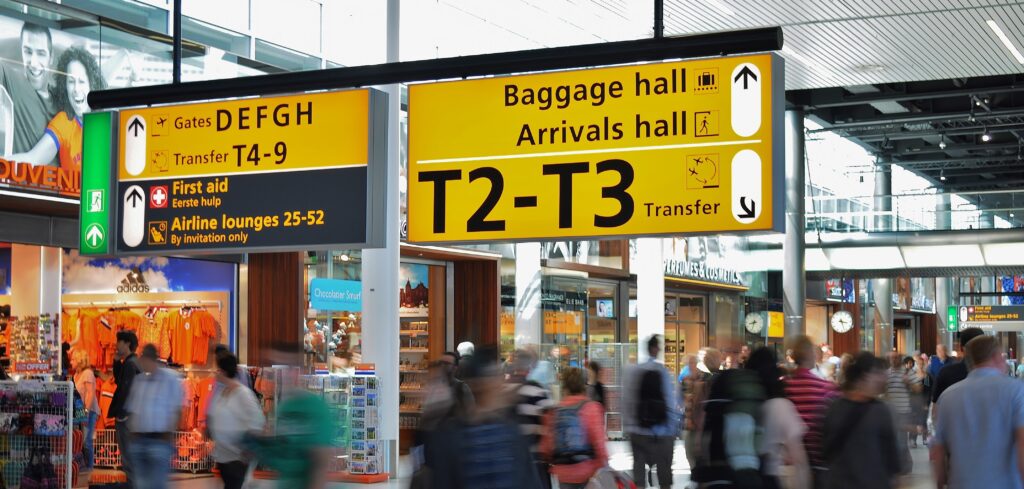One of the biggest challenges at the airport today is the manual processing of the extensive health- and Covid-related documentation required to meet increasing and ever-changing travel regulations. Coupled with limited real-estate space, airports need to make tough decisions about how they are going to provide adequate social distancing and improve check-in facilities at the scale required if the industry is to recover.
The result: airport scenes reminiscent of the 1980s, with snaking four-hour-long check-in queues, disgruntled passengers, denied boarding and overworked airline staff manually checking multiple physical documents for every passenger. The latter can understandably lead to human error: with hundreds of passengers an hour with many documents each, the system breaks at scale.
These challenges will be compounded by the fact that the appetite for travel is big in 2022. Although testing requirements will vary depending on the chosen destination, in the UK passenger confidence is growing, with the travel industry gearing up for a bookings surge that is expected to hit pre-pandemic levels. Therefore, airport capacity and the ability to move passengers through the terminal will be tested like never before.
Passenger airport experience is dependent on airline technology
Passengers’ seamless and smooth transition through the airport is largely dependent on the technology with which airlines manage passenger data, and the reality is that many airlines’ back-office processes are steeped in legacy tech.
Airline passenger systems haven’t changed much since the 1980s and as a result, they tend to be large, clunky and difficult to change. Quite simply, airlines have been slow to adapt to more agile technology as, pre-Covid, the impetus to do so just wasn’t there.
But today that’s a different story. Covid has taught us that governments demand accurate data about passengers, and airlines must be ready for any regulatory changes at a moment’s notice. Our own data at Zamna shows that rules for international travel are currently changing thousands of times a day. Therefore, it’s paramount that technology not only alerts the airlines but also enables them to respond and react to these new rules and requirements and help their passengers meet them. When it comes to passenger communication, this technology connecting the rules and the data to meet them needs to be two-sided: internal for airlines to process passenger information correctly while also being external to the passenger to collect the right data, verify it, secure it and get the passenger ready to fly.
And although the travel industry won’t stay shackled to manual paper-based processes forever, Covid has accelerated the need to fix these broken legacy passenger systems. We’ve seen airlines try innovative products and technologies from established or industry-based aviation players over the last 20 months, but all of them have failed to deliver a seamless experience and failed to clear airports of long queues and manual checks. So, technology alone, if it is pushed onto the passenger to deal with and not integrated invisibly alongside the airline operation process, doesn’t solve the problem.
The airport of the future
As for the airport space itself, I believe the airport of the future should only have experience-focused AR/VR/entertainment technology implemented within it that allows us to increase the magic and genuine enjoyment of travel again. Whether that means being greeted by a virtual service agent, dropping the children off to play with robots in a dedicated kids’ area, automated driverless bag assistance, contactless VR showrooms for discounted duty-free shopping, hologram food menus or 4D entertainment, it’s about adding to the overall passenger experience.
Your travel adventure should begin the moment you enter the airport, not once you’ve passed through a conveyor belt with a multitude of checks and processes, submitted a bunch of documents, collected stamps and papers, all while tediously queuing every step of the way.
Ultimately, airports will rival the best shopping malls and arcades in the future – they lose money for every square foot of space taken up with processing that’s not contributing to passenger experience and the margins of the airport. Equally, airlines want to be able to serve and look after their customers rather than putting them on an admin processing conveyor belt. Passengers need to be confident in the end-to-end travel experience from the moment they leave home, not worrying about being turned away when their documents are deemed to be incorrect at check-in or the gate, dealing with boarding delays due to repeated passenger document checks, or having to entertain restless children while stuck in yet another queue.
Technology enables pre-departure rules and documents to be checked and verified long before the passenger sets foot inside the airport itself, leaving the airport experience dedicated to shopping, leisure and entertainment. The space becomes alive again with the excitement and thrill of travel – a place where passengers find support and delight, not queues and misery.

